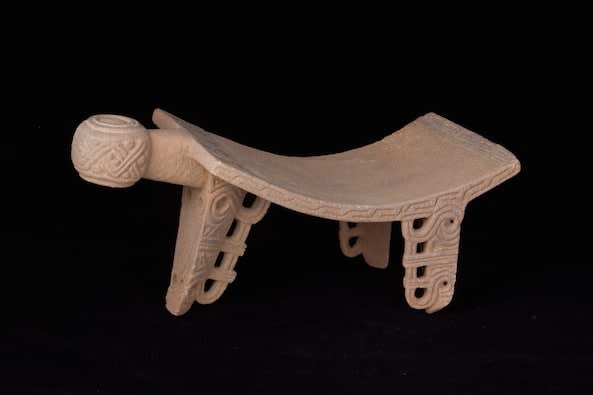Basalt Metate in the Form of a Bird, 500 CE - 1000 CE
Basalt
22
PF.3442
Further images
Many metates from Costa Rica show considerable wear from the grinding of a substance, probably maize, on their upper surface. Their use, however, was most likely restricted to ritual occasions....
Many metates from Costa Rica show considerable wear from the grinding of a substance, probably maize, on their upper surface. Their use, however, was most likely restricted to ritual occasions. Carved from a single piece of volcanic rock with only stone, wooden, or other perishable tools, this metate exhibits remarkably graceful lines and proportions. Intricate low-relief volutes and decorative works on the tripod legs set off the sweeping curve of the plain metate plate. Zoomorphic effigies, such as this avian, may have been clan symbols or deity representations. Elaborately sculpted, this important metate perhaps was used in grinding maize for ritual consumption, or was reserved for special occasions of wealthy or high-status households. The carved avian head is undoubtedly beautiful and well suited for impressive events. Most likely representing the revered harpy eagle, its head is turned to the side. The top of the head is dressed with incised patterns and the large circular eyes seem to radiate a majestic dignity. A work of art with an important function, this metate's beauty is certain to last for centuries to come.
Literature
V18





